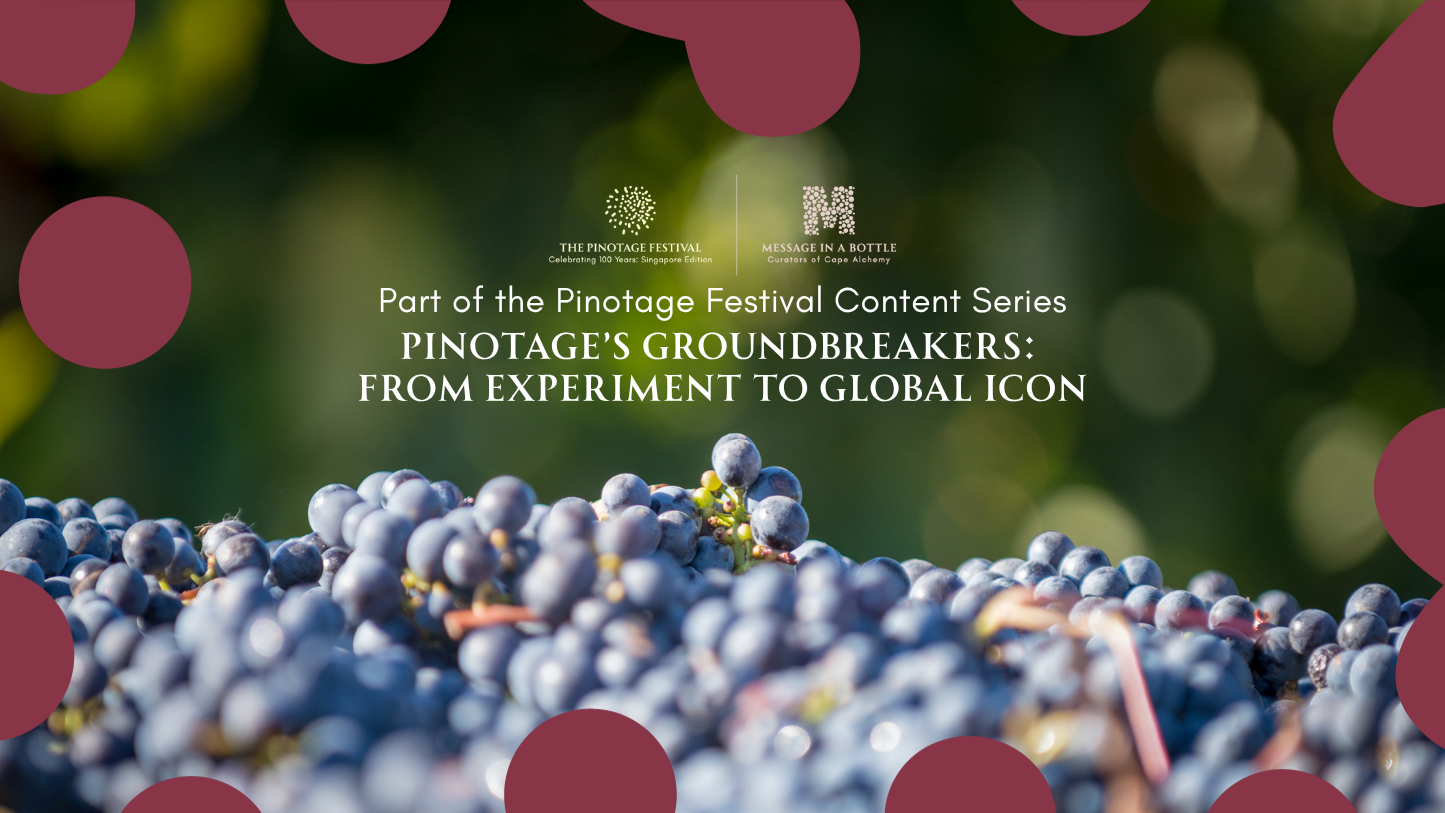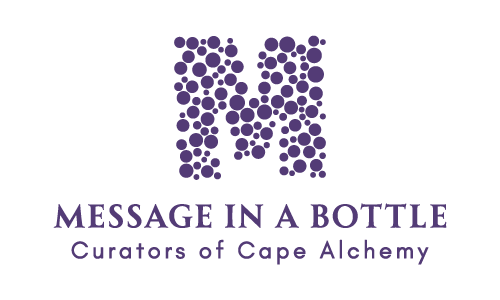
As part of our countdown to Singapore’s inaugural Pinotage Festival on 25th October, we continue our exploration of “The Groundbreakers”—a deep dive into the heritage wineries, seminal figures, and pivotal moments that shaped South Africa’s signature grape. If you’d like an introduction to Pinotage’s origins, see our earlier post: What to Know About South Africa’s Red Varietal: The Pinotage.
Festival Themes
- Theme 1: The Groundbreakers – Heritage wineries united with the earliest plantings of Pinotage and its remarkable legacy.
- Theme 2: Regional Expressions
- Theme 3: Bordeaux Blends vs Cape Blends
- Theme 4: The New Wave
This week, we unpack Theme 1: The Groundbreakers—charting the highs, the hurdles, and the transformations that have made Pinotage a wine world icon.
The Groundbreakers: Discovery, Pioneers & Lasting Legacy
Pinotage’s Beginnings:
Born of a bold cross in 1924 between Pinot Noir and Cinsault by Professor Perold at Stellenbosch University, Pinotage owes its survival to a stroke of luck and the careful stewardship at Elsenburg Agricultural College. Nurtured to maturity over 16 years, the first experimental wine was finally produced in 1941—revealing deep color, vigor, and distinctive fruit.
Why Bellevue, Uiterwyk, and Kanonkop are recognised as pioneering estates:
Bellevue and Uiterwyk were among the very first to plant Pinotage at a commercial scale in Stellenbosch in the 1950s, proving its viability beyond academic interest. Bellevue’s champion block produced the winning Pinotage at the 1959 Cape Wine Show, and its grapes supplied the 1961 Lanzerac label—the first to bear Pinotage’s name. Kanonkop, famed for championing varietal Pinotage and cellar innovation, became synonymous with quality, leading the charge for international recognition, especially through the work of winemakers like Beyers Truter and his successor, Abrie Beeslaar. As their wines continued to win top accolades nationally and globally, their leadership set benchmarks others aspired to.
Significant Locations — Then and Now
Early Pinotage plantings were heavily concentrated in Stellenbosch and the surrounding Western Cape, leveraging access to knowledge networks and the ideal Mediterranean climate. By the 1960s and 1970s, success in the Cape drove further planting into other areas like Paarl, Swartland, Wellington, and more recently, up the coastal zones and even internationally. Today, Pinotage can be found thriving in diverse terroirs across South Africa and abroad, proving its remarkable adaptability and the legacy of its early trailblazers.
Timeline of Key Events
- 1924: Pinotage is created by Perold at Stellenbosch University through a cross of Pinot Noir and Cinsault.
- 1925: Seeds are planted at Welgevallen Experimental Farm; nearly lost but rescued and taken to Elsenburg Agricultural College.
- 1935: Vines successfully grafted and propagated at Elsenburg.
- 1941: First Pinotage wine produced as part of an experiment at Elsenburg. Early observations: deeply colored, robust, fruit-driven wines with high yields—adaptable and vigorous, but showing volatile characters if cellar practices were poor.
- 1943–1953: Commercial adoption begins: Bellevue (Stellenbosch), Uiterwyk, and others plant Pinotage, establishing its commercial identity.
- 1948–early 1990s (Apartheid years): International boycotts and sanctions isolate South Africa. Wine exports stall and the industry is forced to innovate inwards. Pinotage “flourishes” locally—expanded plantings and solid domestic sales under protectionist state control—while innovation and diversity temporarily stall, and social inequities persist.
- 1959: Bellevue’s Pinotage wins the coveted General Smuts Trophy at the Cape Wine Show, providing proof of the grape’s potential and helping establish it as a signature varietal.
- 1961: Using Bellevue grapes, Lanzerac releases the first commercially labeled “Pinotage” wine. Kanonkop, by this time a leading Stellenbosch estate, cements its reputation for quality Pinotage by winning national accolades (the General Smuts Trophy), though Beyers Truter would only become Cellarmaster in later decades.
- 1964: Pinotage is planted by Corbans Winery in New Zealand—the first international adoption. This signals genuine global interest in Pinotage as uniquely South African, despite apartheid restrictions.
- 1976: At the London Wine Trade Fair, Masters of Wine infamously condemn Pinotage as a grape with “no future,” causing a blow to its reputation, especially among international critics and merchants.
- 1991: Beyers Truter (then at Kanonkop, now the face of Beyerskloof) is awarded International Winemaker of the Year, putting Pinotage back into the international spotlight. Abrie Beeslaar succeeds Truter at Kanonkop, continuing its Pinotage-driven legacy.
- 2025: Pinotage’s centenary is marked by celebrations around the globe, reaching a new milestone as Singapore hosts its very first Pinotage Festival—a proud milestone for both Singapore and for the ongoing story of Pinotage.
Summary & How to get your tickets
The history of Pinotage is one of bold ideas, remarkable perseverance, and the vision of groundbreakers who transformed a chance experiment into South Africa’s iconic wine. From its earliest days in Stellenbosch to global acclaim—despite political isolation and shifting perceptions—Pinotage stands as a testament to innovation, adaptability, and cultural pride. As the grape celebrates its centenary, its story continues to be written by pioneering winemakers, new regions, and passionate enthusiasts across the world.
Now, experience Pinotage’s legacy firsthand! Secure your place at Singapore’s very first Pinotage Festival—explore heritage wines, discover new expressions, and immerse yourself in the celebration.
Get your tickets today!
